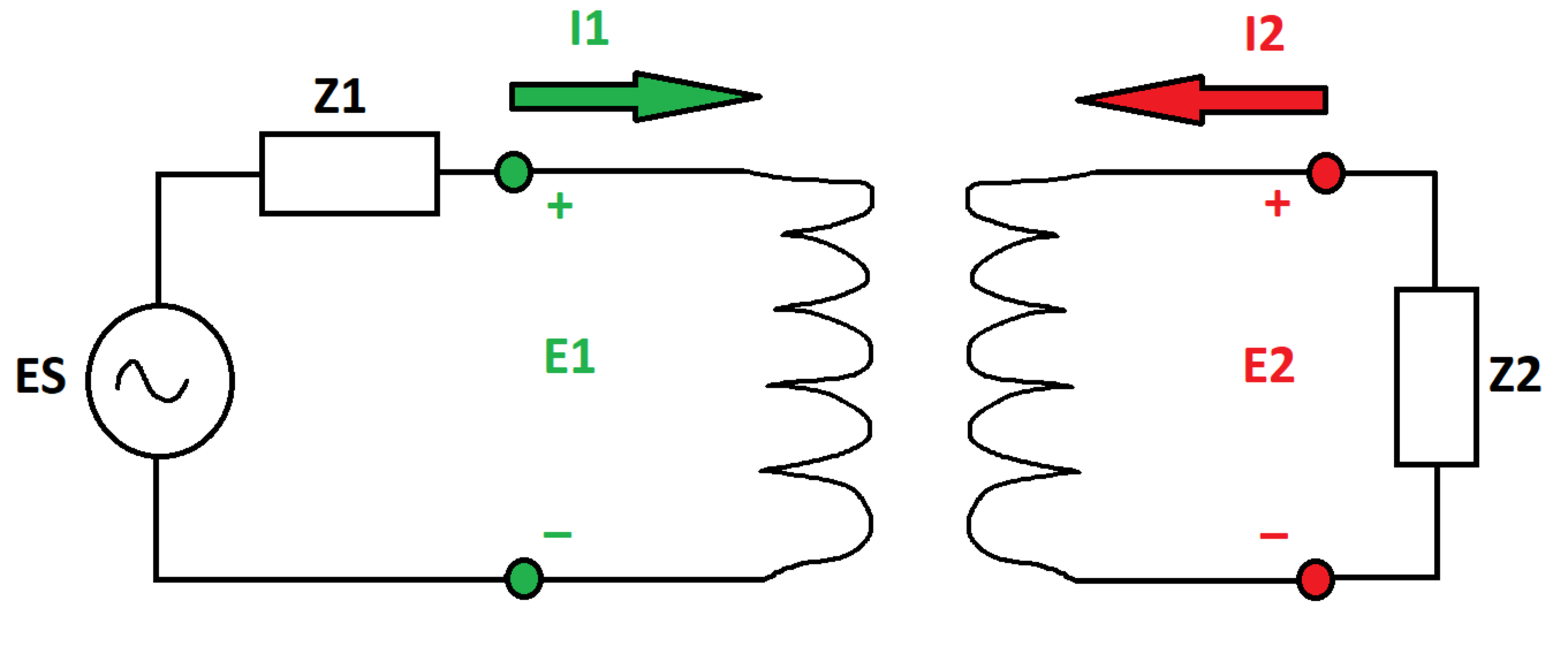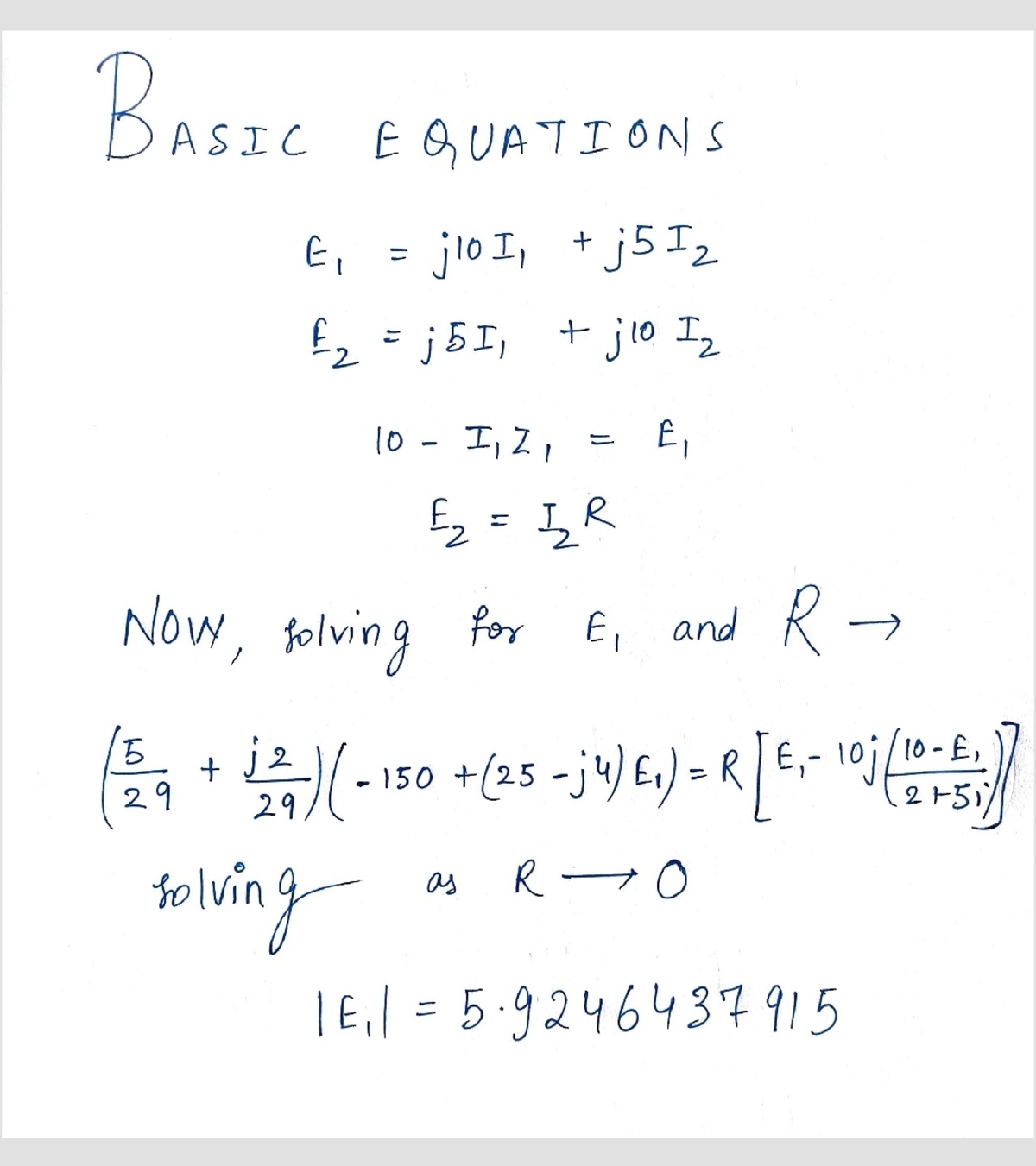Transformer (8-13-2020)
A transformer is governed by the following equations:
In the equations, and are the terminal voltages and and are the terminal currents (note the polarity conventions in the diagram). and are the transformer winding self and mutual impedances.
An AC voltage source with internal voltage and internal impedance is connected across the first set of terminals, and an impedance is connected across the second set of terminals. Let be purely resistive .
What is the limiting value of the magnitude of as approaches zero?
Bonus: What would the answer be if the transformer were ideal?
Details and Assumptions:
1)
2)
3)
4)
5)
Consider all quantities to be complex numbers. The quantity
is the imaginary unit

The answer is 5.9246.
This section requires Javascript.
You are seeing this because something didn't load right. We suggest you, (a) try
refreshing the page, (b) enabling javascript if it is disabled on your browser and,
finally, (c)
loading the
non-javascript version of this page
. We're sorry about the hassle.
Nice problem
I have made the little changes in solving equation from last problem.
I am little bit confused about bonus, hope author will give its answer.